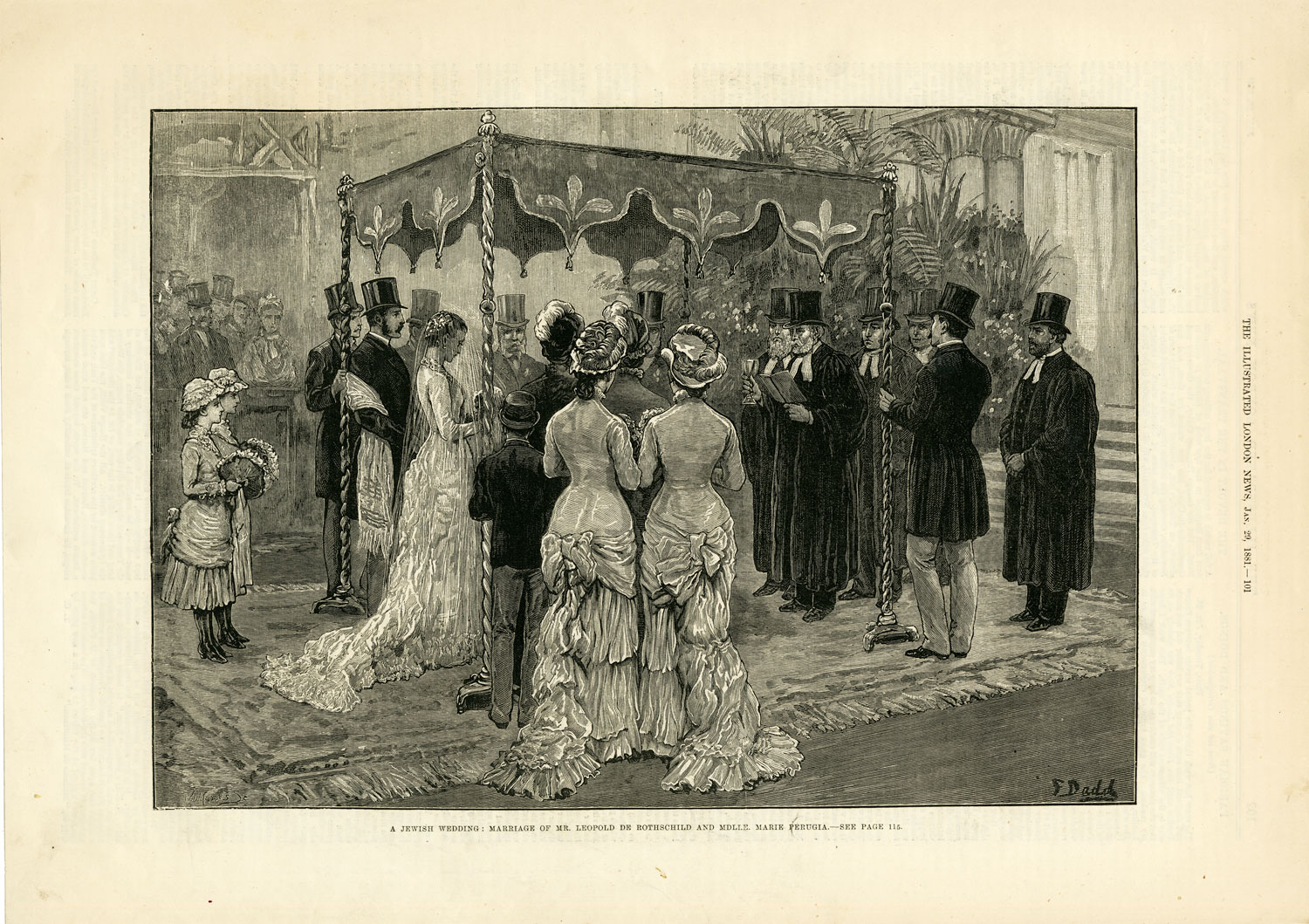Jewish weddings are joyous events and family affairs, but also can be occasions for ostentatious display. This was certainly true in the 19th century of the Rothschilds, the wealthiest Jewish family in Europe, with branches in many countries. While weddings were opportunities and obligations to display their affluence and good taste, they also displayed the family’s commitment to Jewish tradition. Though some Jewish marriage ceremonies continued to be held under canopies outdoors, by the 19th century in England, weddings were increasingly seen as religious rites of passage requiring rabbinic supervision as well as a synagogue setting. Since the Rothschilds helped pay for the building of London’s Central Synagogue, it was appropriate that their family rituals be celebrated there. Accounts of the wedding of Leopold Rothschild (1845–1917) and Marie Perugia (1862–1937) addressed both its religious ceremonial aspects and its social importance.
Reports in various newspapers detailed the grandeur of the event, and also highlighted its religious nature. The March 19, 1881, edition of Australian newspaper the Mercury described the scene: “The synagogue was crowded, and Great Portland-street was thronged with spectators;” the floral arrangements were so impressive the florist “had supplied no one else for a week in order to have flowers for the Rothschild marriage.” While obviously an opportunity for opulent display, religion did not take a backseat in this Jewish wedding. Both the Mercury and the Illustrated London News recount at length the multiple prayers and blessings recited during the ceremony. The News states that the service featured an initiatory prayer by the Rev. S. Lyons and the bridegroom invoked the authority of “the law of Moses and Israel” as he placed the ring on his bride’s finger. The ceremony continued with seven more blessings and a prayer that the cities of Jerusalem and Judah would again hear “the voice of joy and the voice of song [and] the voice of the bridegroom and bride.”
